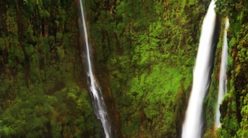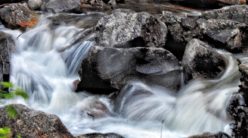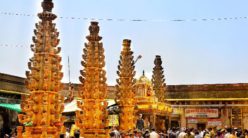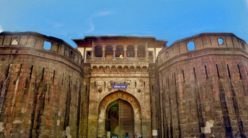Guided Tour
Raigad Fort stands majestically atop a large hill near Mahad and holds immense significance in Maratha history. This iconic stronghold served as the very first capital of the independent Maratha kingdom. In 1674, Chhatrapati Shivaji Maharaj chose Raigad as his capital, marking the beginning of a new era in Maharashtra’s legacy.
The fort soars 2,700ft above sea level, nestled within the rugged Sahyadri mountain range. To reach the summit, visitors can either climb approximately 1,737 steps—a true test of endurance and spirit—or opt for the Raigad Ropeway, an aerial tramway that whisks you up to the fort’s entrance in just 10 minutes.
A visit to Raigad is not just a journey through breathtaking scenery, but also a walk through the pages of Maratha history, where every stone echoes tales of valor and vision.

Raigad Fort is enveloped by the mighty Sahyadri mountains, which made it strategically secure and nearly impregnable for centuries. Before Chhatrapati Shivaji Maharaj captured it, the fort was known as “Rairi.” Its exceptional fortification earned it the nickname “Gibraltar of the East,” highlighting just how formidable and defensible it was.
Historically, Raigad has been known by at least 15 different names, reflecting its long and varied past: Raigad, Rairi, Raigiri, Bhivgad, Reddi, Shivlanka, Islamgad, Nandadeep, Jambudweep, Tanas, Rashivata, Badenur, Rajgiri, Rahir, and the Gibraltar of the East. In the 16th century, before being developed into a proper fort, locals referred to it as “rashivata” and “Tanas.” Its unique shape, resembling a tall oil lamp tower, led to the poetic name “Nandadeep.”
For modern visitors, the Raigad Ropeway offers an effortless and scenic way up, bypassing the steep climb of nearly 1,737 steps. Introduced in 1996, this aerial tramway glides through cool, misty clouds and offers breathtaking mountain vistas as you ascend. The Ropeway lands directly at the historic Mena Darwaja (Queen’s Gate), adding a unique and memorable element to your visit. Whether you hike or take the Ropeway, Raigad’s dramatic history and panoramic views make it an unforgettable destination.
About Raigad Fort Structure
Raigad Fort, built under the direction of Chhatrapati Shivaji Maharaj and designed by chief architect Hiroji Indulkar, is a masterpiece of Maratha architecture. Perched on a massive hilltop in Maharashtra’s Sahyadri range, the fort was both a military stronghold and a symbol of Maratha pride.
Main Palace:
The main palace, once the residence of Shivaji Maharaj, was constructed primarily from wood—a distinctive choice for the time. Today, only the base stone pillars of this grand wooden palace are visible, giving a glimpse into its historic layout and scale.
Queens’ Quarters (Rani Vasa):
Adjacent to the main palace stand the queens’ quarters, known as the Rani Vasa. This area comprises several small, individual chambers dedicated to Shivaji Maharaj’s wives. Each chamber was designed to ensure privacy and comfort, complete with personal courtyards and access points.
The main fort ruins at Raigad prominently feature the queen’s quarters, which include six individual chambers—each equipped with its own private restroom, a remarkable example of thoughtful design for the era. In front of the palace grounds, you can spot the remains of three ancient watchtowers. However, only two of these historic towers still stand today; the third was destroyed during a past bombardment. These elements reflect both the architectural sophistication and the turbulent history that Raigad has witnessed.
Market
The Raigad Fort also features the intriguing ruins of an old market area. This marketplace was uniquely designed to allow horseback riders to pass through and shop directly from their saddles—a practical and strategic detail reflecting the fort’s royal and military purpose. The wide lanes and layout of the market remain visible today, offering a glimpse into the vibrant commercial life that once thrived within the fort’s walls.
Ganga sagar lake
The fort also overlooks the striking Ganga Sagar Lake, an artificial reservoir built within the Raigad Fort complex. This lake not only added to the beauty of the surroundings but also served as a vital water source for the fort’s inhabitants, ensuring their needs were met during long sieges and daily life on the hilltop
The Maha Darwaja
The sole main pathway leading to Raigad Fort passes through the imposing “Maha Darwaja” (Huge Door). Historically, this grand entrance was securely closed at sunset to protect the fort’s residents. Flanking the Maha Darwaja are two massive bastions, each soaring approximately 65–70ft high, adding to the gateway’s formidable presence. From the Maha Darwaja, the summit of the fort rises another 600ft, emphasizing the strategic and elevated position of Raigad Fort.
Hirkani buruj
One of Raigad Fort’s most remarkable features is the “Hirakani Buruj” (Hirakani Bastion), constructed atop a massive, steep cliff. According to legend, Hirakani, a village woman who came to the fort to sell milk, found herself locked inside after the gates closed at sunset. Upon hearing her infant son’s cries echoing from the village below, her maternal instinct drove her to scale down the treacherous cliff in total darkness, risking her life to reunite with her child.
When Chatrapati Shivaji Maharaj learned of her fearless act, he was so moved by her courage that he had the Hirakani Bastion built on that very cliff, honoring her bravery for generations to come. This story remains a cherished tale of devotion and daring associated with Raigad Fort.
Darbar
Inside Raigad Fort, you’ll find a replica of the original throne, perfectly positioned to face the main entrance known as the Nagarkhana Darwaja. This impressive enclosure was expertly designed with acoustics in mind, allowing voices and sounds from the doorway to carry clearly to the throne. Such thoughtful engineering ensured that important announcements and communications could be heard by the ruler as well as the royal court, enhancing the fort’s function as the Maratha seat of power.

Mena or palakhi darwaja
Raigad Fort features a secondary entrance known as the Mena Darwaja, which was believed to be the exclusive, private entry for the royal ladies, providing direct access to the queen’s quarters. In contrast, the king and his convoy used the grand Palkhi Darwaja as their designated entrance.
Adjacent to the Palkhi Darwaja, on the right, there’s a row of three dark, deep chambers. Historians suggest these chambers once served as the fort’s granaries, used for storing essential food supplies during sieges and daily life.
The Takmak Tok
From Raigad Fort, you can see the infamous execution point known as Takmak Tok—a dramatic cliff used in the past to carry out capital punishment by throwing convicted prisoners to their deaths. Today, this area is securely fenced off for visitors’ safety.
A striking statue of Chatrapati Shivaji Maharaj stands at the beginning of the ruined main market avenue, which leads towards the revered Jagdishwar Mandir. Nearby, you’ll find the Samadhi (memorial) of Shivaji Maharaj himself, as well as that of his loyal dog, Waghya. At the base village of Pachad, you can also visit the Samadhi of Jijabai, Shivaji’s revered mother, making these sites important pilgrimage and heritage spots connected with the Maratha legacy.

MINT (Taksal)
On Raigad Fort, there was a mint—often referred to as a “coinage plant” or “takkasal”—where currency was officially minted during the reign of Chhatrapati Shivaji Maharaj. This mint operated under royal authority, producing coins that symbolized the independence and sovereignty of the Maratha kingdom. The existence of the mint at Raigad not only supported administrative and economic activities but also served as a powerful testament to Shivaji’s vision of a self-reliant and independent Hindavi Swarajya.
Vijay stambh
Whenever Chhatrapati Shivaji Maharaj captured a fort, a grand bhagva (saffron) flag was ceremoniously hoisted atop a multi-storied pillar (stambh) within the fort complex. This particular stambh at Raigad has seven distinct floors, making it visible from great distances. Raising the saffron flag atop this tall pillar not only signaled victory to the people but also served to inspire and uplift the morale of Shivaji Maharaj’s followers and soldiers. It became a powerful symbol of Maratha pride, sovereignty, and unity.
Jagdishwar temple
The Jagdishwar Temple at Raigad is dedicated to Lord Shiva and is renowned for its unique architectural style. Due to the constant threat of Mughal attacks on temples situated within various forts—including Raigad—Chhatrapati Shivaji Maharaj made strategic architectural choices when building this temple.
To protect it from being destroyed or desecrated by invaders, Shivaji Maharaj designed Jagdishwar Temple in the Mughal architectural style, allowing it to blend in and avoid attracting unwanted attention. Notably, the temple features small entrance doors. This clever design made it difficult for the typically tall Mughal soldiers to enter easily, serving as a subtle but effective defense mechanism. Such innovative measures ensured the temple’s survival during turbulent times and stand as a testament to Shivaji Maharaj’s foresight and tactical ingenuity.
Shivaji maharaj samadhi
The Samadhi (memorial) of Chhatrapati Shivaji Maharaj is located near the Jagdishwar Temple at Raigad Fort. Behind Shivaji Maharaj’s Samadhi, there is a statue of his loyal dog, Waghya, symbolizing unwavering companionship.
Remarkably, the Samadhi site had become lost and overgrown among dense trees over time. In 1880, Mahatma Jyotirao Phule personally journeyed from Pune to Raigad to find and reestablish the resting place of the great Maratha king. Upon locating it, he cleared the site and offered his respects, restoring the Samadhi’s significance for future generations.
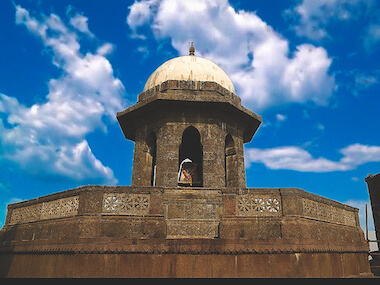
for more details subscribe my youtube channel









